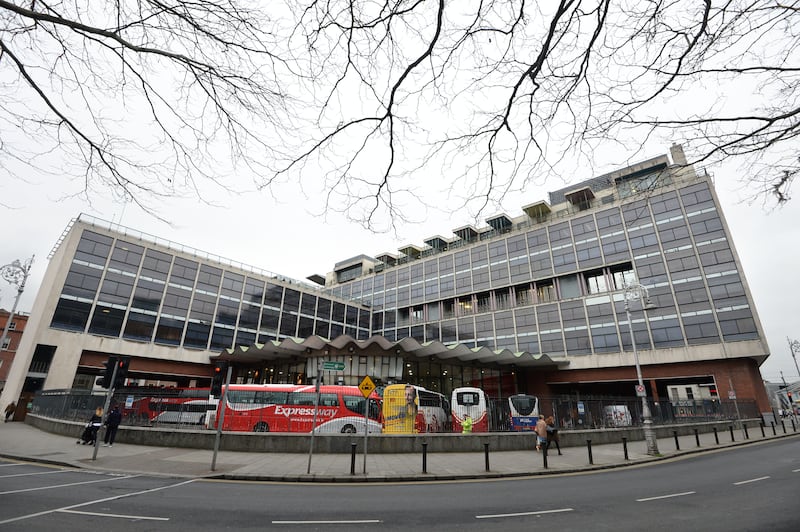Much has been written about the problems of Dublin’s inner city, in particular its north-eastern quadrant, generally acknowledged to be one of the most socially deprived places in the country. The subject has cropped up again recently because of a number of incidents, including a violent assault, which caused life-changing injuries to American tourist Stephen Termini.
Multi-generational unemployment, economic marginalisation, inadequate policing, the fact the area has been Ground Zero for a 40-year-long opiate epidemic ... all these and other reasons have been advanced with some justification for the problems the district clearly suffers.
But there another factor is how the northeast inner city, especially the part of it around Talbot Street where the assault occurred, is the poster child for a very Irish sort of public squalor, rooted not just in social deprivation but in appalling planning and an abject failure of aesthetic imagination. Not for the first time, the people responsible for the fabric of the city have failed the people who live in it.
Just as the area’s social and economic difficulties are a distilled version of similar problems across the country, so the disastrous management of its public realm is a vivid illustration of the failure of the State, local government and other agencies to plan and deliver urban spaces that feel functional or comfortable, much less pleasant or inspiring.
READ MORE
[ Are parts of Dublin really no-go areas?Opens in new window ]
The place where the assault on Stephen Termini took place is right at the nexus of what should be the largest public transport interconnection in the country. National coach services operate from Busáras, the Luas Red Line stops at Store Street, Dart, suburban and intercity rail all converge on Connolly Station. Dublin Bus routes to and from the north-eastern suburbs funnel through Amiens Street and Talbot Street. All of these lie within a couple of hundred metres of each other – the sort of space that a large metro station might take up in another city. Except we don’t have any metro stations.
This now-empty, windswept piece of architectural hubris contrasts with the scene on the other side of Amiens Street, where bus passengers huddle from the rain on unsheltered footpaths so narrow that they put pedestrians’ lives in danger at rush hour
Two landmark public buildings anchor the area: 180-year-old Connolly with its imposing classical facade, and the 70-year-old Busáras, the most significant early example of Irish modernist architecture.

In other hands, these might have formed the focal points for a coherent transport hub. Far from it. No attempt was ever made to render the uninviting and grubby rear aspect of Busáras open or appealing to travellers transferring from the Luas or train lines. Connolly’s original handsome main entrance is blocked off since a 1990s renovation. The south end of the station is dominated by a grandiose folly designed to accommodate a Luas terminus, which served its function for a total of five years until the extension towards Docklands rendered it obsolete. This now-empty, windswept piece of architectural hubris contrasts with the scene on the other side of Amiens Street, where bus passengers huddle from the rain on unsheltered footpaths so narrow that they put pedestrians’ lives in danger at rush hour.
Litter and grime
If you walk through this area on a regular basis, you’ll know that it’s not the hellscape that has sometimes been painted. There’s edginess and drug dealing. There are people who you’d feel sorry for but also wouldn’t want to get too close to. There are rough sleepers, as there are everywhere these days. But there’s also dereliction and litter and grime. Unemptied bins. Ugly, confusing signage. Cracked paving slabs. Potholes. Vacant sites that have been empty for years. You’re unlikely to see any of these streets featuring in glossy Fáilte Ireland videos although paradoxically they’re full of tourists due to the plentiful supply of cheap hotels, hostels and AirBnBs.
In Dublin, as elsewhere, rough, transitional parts of town get rough, unsympathetic treatment from the authorities. That’s not new
Since the middle of the 19th century, the areas around major train stations in European cities have tended towards the gritty: people on the move; people on the margins; petty criminality and prostitution (a century ago this part of the capital was supposedly Europe’s largest red light district). In Dublin, as elsewhere, rough, transitional parts of town get rough, unsympathetic treatment from the authorities. That’s not new. One of the greatest acts of architectural vandalism perpetrated on the city was the Victorian overhead Loopline from Pearse to Connolly, which carved a black iron swathe through these streets and closed off the vistas from the city centre towards the Custom House and Connolly Station. Some 130 years later, you can trace the string of Dublin’s methadone clinics along its shadow from the north side to the south side of the Liffey The consequences of architectural and planning decisions are never abstract.












